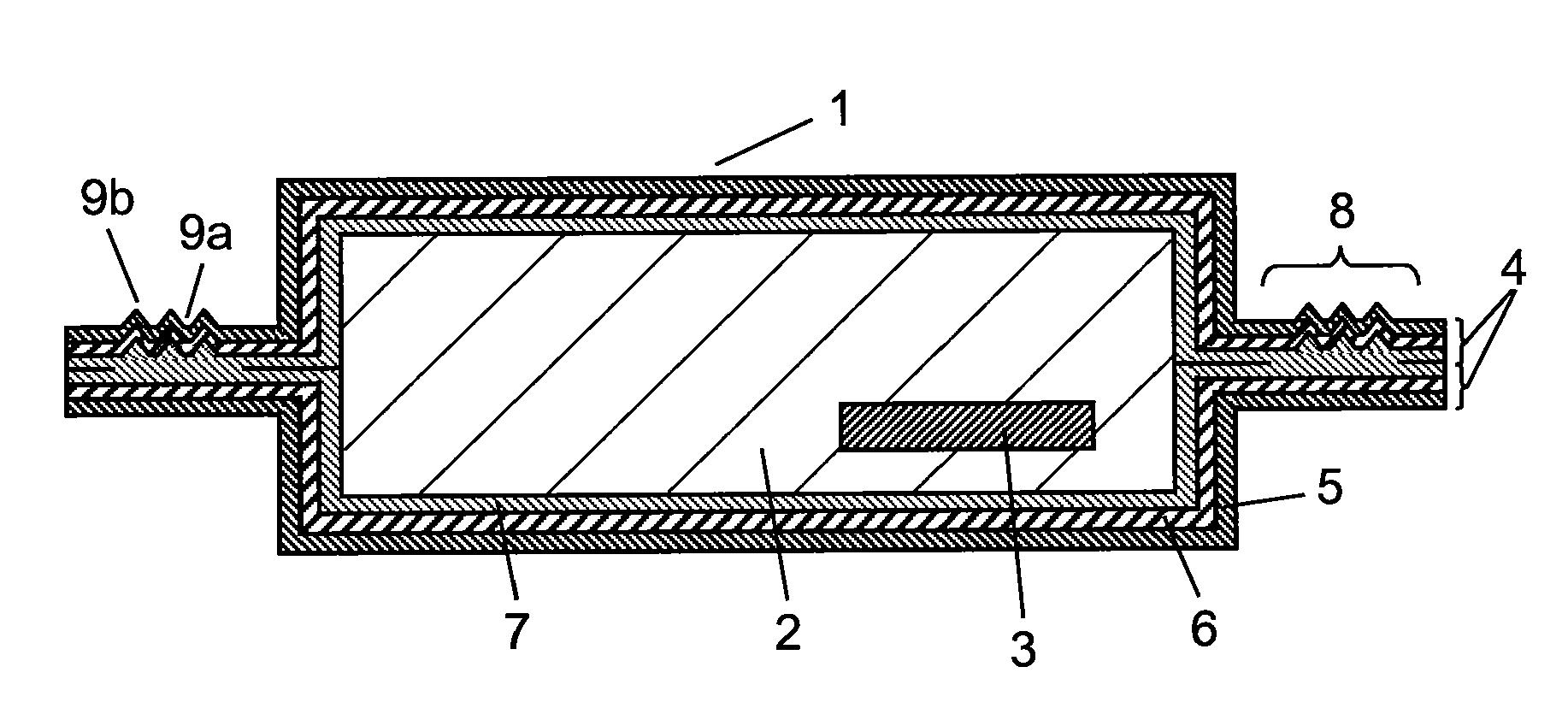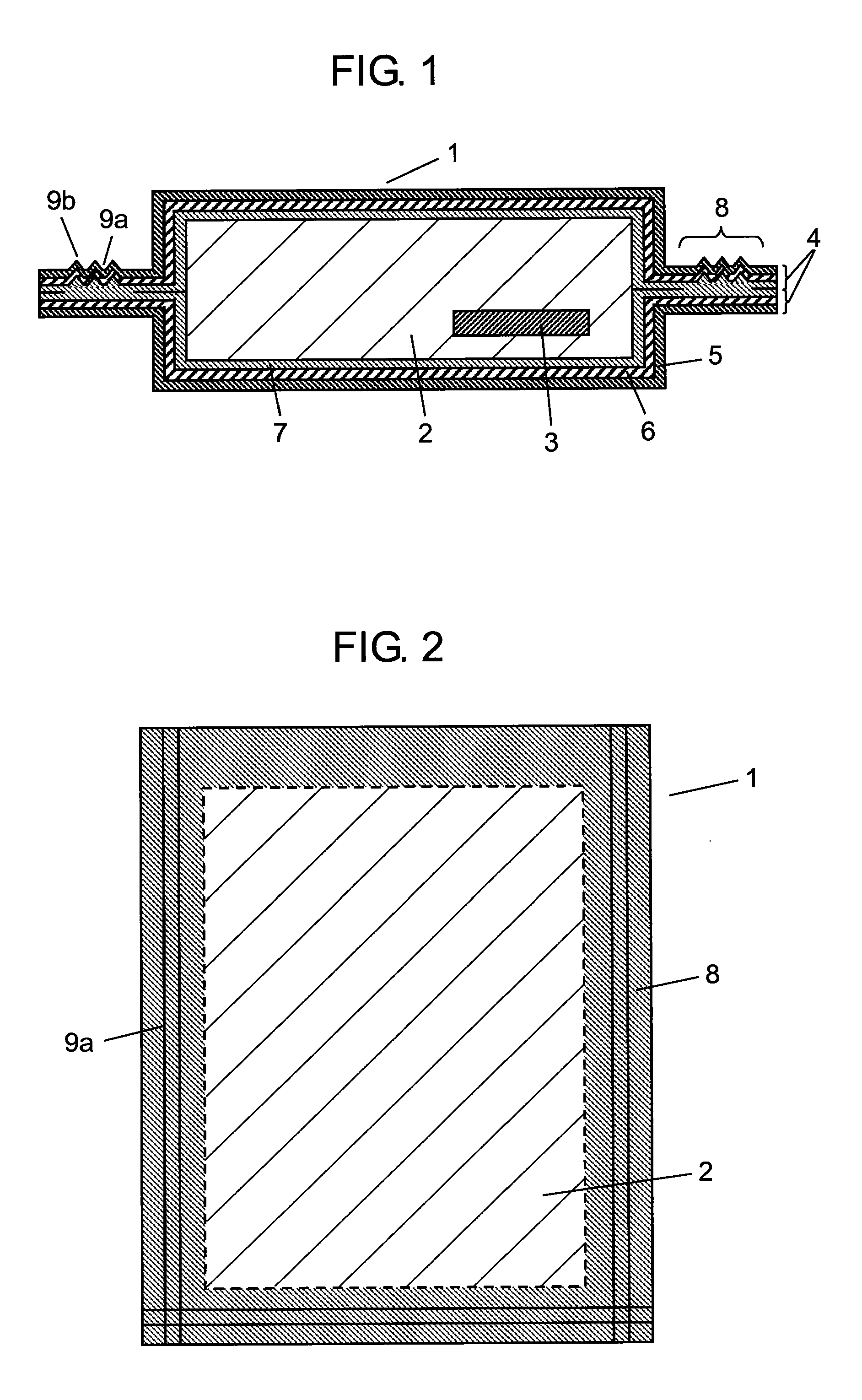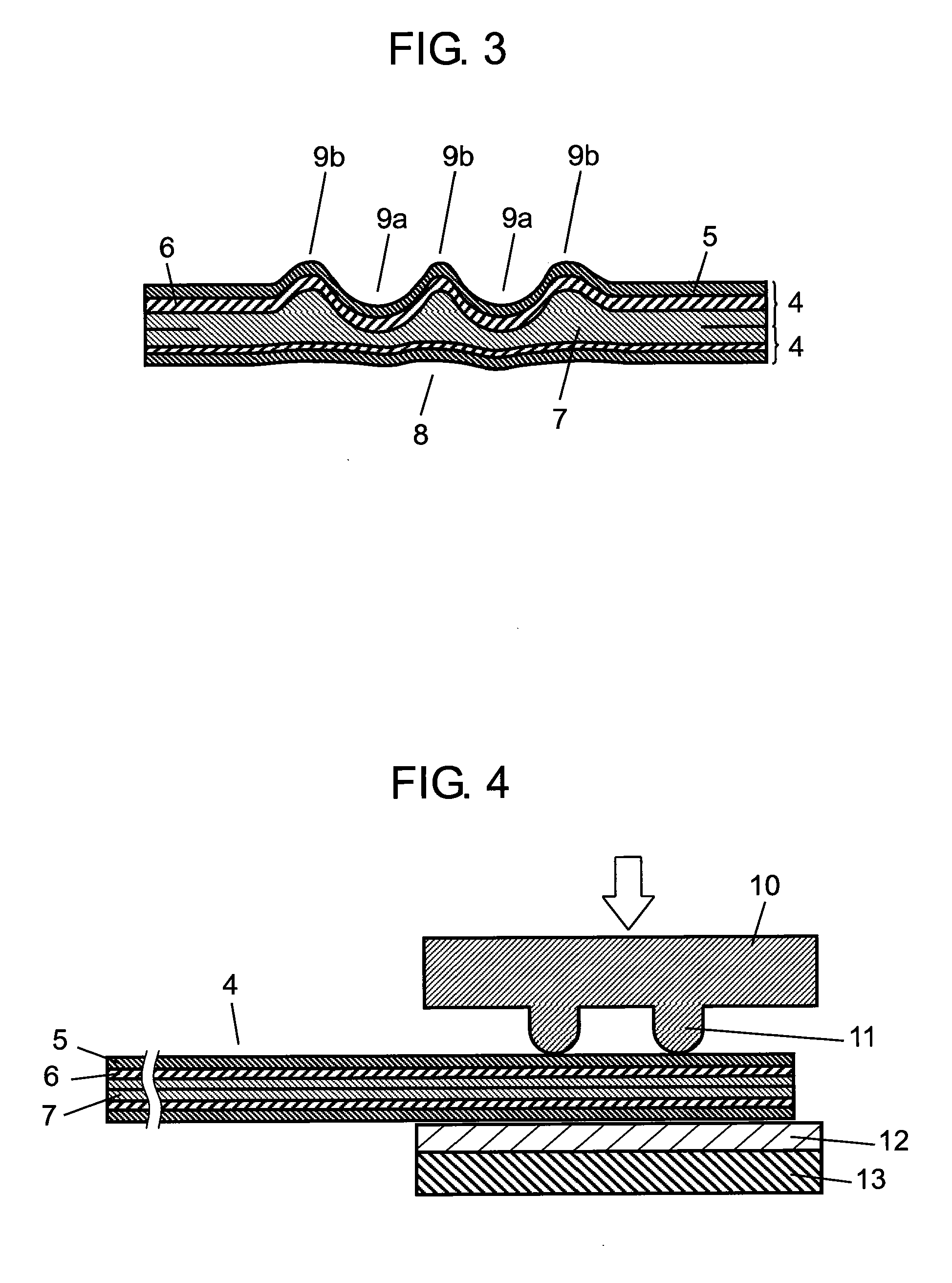Vacuum heat insulation material and manufacturing method therefor
a technology of heat insulation material and vacuum, applied in the field of vacuum insulation material, to achieve the effect of suppressing reducing the thickness of the thinnest part, and preventing the occurrence of pinholes
- Summary
- Abstract
- Description
- Claims
- Application Information
AI Technical Summary
Benefits of technology
Problems solved by technology
Method used
Image
Examples
embodiment 1
Preferred Embodiment 1
[0061]FIG. 1 is a sectional view of a vacuum insulation material in preferred embodiment 1 of the present invention. FIG. 2 is a plan view of the vacuum insulation material of the preferred embodiment. FIG. 3 is a sectional view showing a sealing part having a thin-wall part and a thick-wall part of the vacuum insulation material of the preferred embodiment. FIG. 4 is a sectional view showing an example of a heating and pressing operation of an laminate film by a pressing and compressing jig of the vacuum insulation material of the preferred embodiment. FIG. 5 is a plan view of other example of the vacuum insulation material in preferred embodiment 1 of the present invention. FIG. 6 is a sectional view of a modified example of the sealing part having the thin-wall part and the thick-wall part of the vacuum insulation material in preferred embodiment 1 of the present invention.
[0062]As shown in FIG. 1, vacuum insulation material 1 of the preferred embodiment inc...
first exemplary embodiment
[0112]In preferred embodiment 1, sealant layer 7 is a straight-chain low-density polyethylene film of thickness of 50 μm, gas barrier layer 6 is an aluminum foil of thickness of 6 μm and protective layer 5 is a nylon film of two layers of thickness of 15 μm and 25 μm, which were laminated to form laminate film 4. This laminate film 4, core material 2 composed of glass fiber, and adsorbent 3 composed of calcium oxide were combined to compose vacuum insulation material 1.
[0113]On the surrounding of laminate film 4 (on the outer circumference), there is sealing part 8 composed by fusing and adhering mutually sealant layers 7 of laminate film 4, and on three sides out of four sides of sealing part 8, thin-wall parts 9a of groove shape parallel to the peripheral edge are formed, and as shown in FIG. 7, four thin-wall parts 9a are disposed in parallel in a direction perpendicular to the peripheral edge. In FIG. 7, the radius of curvature in the deepest part of concave part of sealant laye...
second exemplary embodiment
[0119]In preferred embodiment 1, sealant layer 7 is a straight-chain low-density polyethylene film of thickness of 50 μm, gas barrier layer 6 is an aluminum foil of thickness of 6 μm, and protective layer 5 is a nylon film of two layers of thickness of 15 μm and 25 μm, which were laminated to form laminate film 4. This laminate film 4, core material 2 composed of glass fiber, and adsorbent 3 composed of calcium oxide were combined to compose vacuum insulation material 1.
[0120]On the surrounding of laminate film 4 (on the outer circumference), there is sealing part 8 composed by fusing and adhering mutually sealant layers 7 of laminate film 4, and on three sides out of four sides of sealing part 8, thin-wall parts 9a of groove shape parallel to the peripheral edge are formed, and as shown in FIG. 7, four thin-wall parts 9a are disposed in parallel in a direction perpendicular to the peripheral edge. In FIG. 7, the radius of curvature in the deepest part of concave part of sealant lay...
PUM
| Property | Measurement | Unit |
|---|---|---|
| thickness | aaaaa | aaaaa |
| thickness | aaaaa | aaaaa |
| thickness | aaaaa | aaaaa |
Abstract
Description
Claims
Application Information
 Login to View More
Login to View More - R&D
- Intellectual Property
- Life Sciences
- Materials
- Tech Scout
- Unparalleled Data Quality
- Higher Quality Content
- 60% Fewer Hallucinations
Browse by: Latest US Patents, China's latest patents, Technical Efficacy Thesaurus, Application Domain, Technology Topic, Popular Technical Reports.
© 2025 PatSnap. All rights reserved.Legal|Privacy policy|Modern Slavery Act Transparency Statement|Sitemap|About US| Contact US: help@patsnap.com



